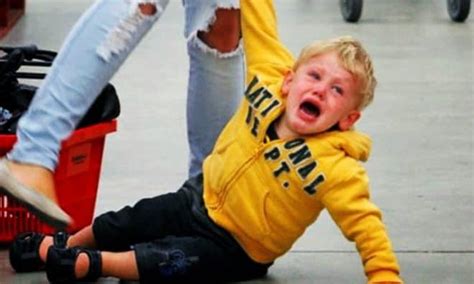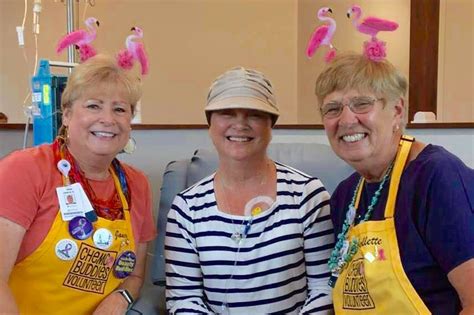
Your furry companion may be showing their love in ways you haven’t realized. A veterinarian has outlined seven key signs indicating your pet’s affection, ranging from simple physical contact to more subtle behavioral cues. Understanding these signs can strengthen the bond between pet owners and their animals.
Dr. Melissa Beitz, a veterinarian with expertise in animal behavior, highlights that recognizing these signs is crucial for fostering a deeper connection with your pet. “Understanding how your pet expresses affection helps build a stronger, more fulfilling relationship,” Beitz explains. “It’s not always about grand gestures; often, it’s the small, everyday behaviors that speak volumes.”
The Seven Signs of Affection
-
Physical Contact: Leaning, snuggling, or simply staying close are prime indicators of affection. “If your pet enjoys physical contact like leaning against you or snuggling up, it’s a clear sign they feel safe and comfortable in your presence,” says Dr. Beitz. This behavior mimics the comfort and security they experienced as puppies or kittens with their mothers. The act of seeking out physical closeness is a deliberate choice, signaling trust and affection. Cats might rub against your legs or face, depositing pheromones that mark you as part of their territory and social group. Dogs might nudge your hand for attention or rest their head on your lap, seeking comfort and connection. Ignoring this type of physical contact can be detrimental to the animal’s emotional health, leading to feelings of anxiety or insecurity. Responding positively reinforces the bond and creates a positive feedback loop of affection.
-
Eye Contact: A soft gaze or prolonged eye contact, distinct from a challenging stare, signifies trust and love. “Prolonged, soft eye contact is a sign of deep trust and affection in many animals,” notes Dr. Beitz. “It indicates they feel secure and connected to you.” In the animal kingdom, direct eye contact can often be interpreted as a challenge or a threat. However, when a pet gazes at you with relaxed eyes and a soft expression, it indicates a feeling of safety and vulnerability. This type of eye contact releases oxytocin, often referred to as the “love hormone,” in both humans and animals, further strengthening the emotional connection. Avoiding eye contact with your pet can be perceived as a sign of rejection or disinterest, potentially damaging the relationship. Responding to their gaze with a gentle smile or a soft word can reinforce the bond and make them feel loved and appreciated.
-
Bringing Gifts: While not always pleasant, presenting you with toys or even dead animals is a sign of caring. “Bringing you ‘gifts,’ like a favorite toy or something they found outside, is their way of showing they care and want to share with you,” explains Dr. Beitz. This behavior stems from their natural instincts. In the wild, animals often bring food to their offspring or pack members as a sign of provision and care. When your pet brings you a toy or other object, they are essentially treating you as a member of their family and offering you a valuable resource. While the “gift” might not always be something you want, it’s important to acknowledge the gesture and show appreciation. Even a simple “thank you” or a pat on the head can communicate that you understand and appreciate their intention. Rejecting the gift outright can be hurtful and may discourage them from expressing their affection in the future.
-
Following You Around: Shadowing your every move is a sign they enjoy your company and feel secure with you. “If your pet follows you from room to room, it’s because they enjoy your company and feel safe when you’re nearby,” Dr. Beitz states. This behavior is particularly common in dogs, who are pack animals by nature and thrive on social interaction. By following you around, they are ensuring they remain close to their “pack leader” and are included in all activities. Cats may also exhibit this behavior, particularly if they have formed a strong bond with their owner. However, it’s important to differentiate between normal following behavior and signs of separation anxiety. If your pet exhibits other symptoms of anxiety, such as excessive barking or destructive behavior when you are away, it’s important to consult with a veterinarian or animal behaviorist.
-
Happy Greetings: Enthusiastic greetings upon your return, such as tail wags, purrs, or excited vocalizations, are unmistakable signs of joy. “An enthusiastic greeting when you come home is a clear sign that your pet missed you and is happy to see you,” says Dr. Beitz. This behavior is often the most obvious and heartwarming display of affection. Dogs may jump, bark, and wag their tails uncontrollably, while cats may purr loudly and rub against your legs. These greetings are a sign that your pet has been eagerly anticipating your return and is overjoyed to have you back. It’s important to acknowledge and reciprocate these greetings with a warm hug, a gentle pat, or a few kind words. This reinforces the bond and makes them feel loved and appreciated.
-
Relaxed Body Language: Loose muscles, relaxed posture, and a soft expression indicate they feel comfortable and safe around you. “A relaxed posture, with loose muscles and a soft expression, indicates they feel comfortable and safe in your presence,” Dr. Beitz explains. When an animal feels threatened or anxious, their body language will reflect that. They may tense up, tuck their tail, or flatten their ears. However, when they feel safe and secure, their muscles will relax, their posture will become more loose and comfortable, and their expression will soften. Paying attention to your pet’s body language can provide valuable insights into their emotional state. If you notice them exhibiting signs of stress or anxiety, it’s important to identify the cause and take steps to alleviate their discomfort.
-
Sleeping Near You: Choosing to sleep near you, whether on the bed or in the same room, is a sign of deep trust and affection. “Choosing to sleep near you indicates a deep level of trust and affection,” notes Dr. Beitz. “It’s a vulnerable act that shows they feel safe and secure in your presence.” Sleeping is a vulnerable state, as animals are less aware of their surroundings and more susceptible to danger. When a pet chooses to sleep near you, they are essentially placing their trust in you to protect them. This is a significant sign of affection and a testament to the strength of your bond. While some owners may not want their pets sleeping in their bed, allowing them to sleep in the same room can still provide a sense of comfort and security.
Understanding the Nuances
While these seven signs are generally indicative of affection, Dr. Beitz emphasizes the importance of understanding individual pet personalities. “Every pet is different, and they express affection in their own unique ways,” she says. “Pay attention to your pet’s individual quirks and behaviors to truly understand how they show their love.”
Some pets may be more demonstrative than others, while others may be more subtle in their expressions of affection. For example, some cats may be very affectionate and enjoy being held and cuddled, while others may prefer to keep their distance. Similarly, some dogs may be very eager to please and eager to shower their owners with affection, while others may be more independent and reserved.
It’s also important to consider the breed and background of your pet. Certain breeds are known for being more affectionate than others, while animals that have experienced trauma or neglect may be more hesitant to show affection.
By paying attention to your pet’s individual personality and background, you can gain a better understanding of how they express their love and build a stronger, more fulfilling relationship.
The Importance of Reciprocity
Affection is a two-way street. Just as pets show their love for their owners, it’s important for owners to reciprocate that affection. “Responding to your pet’s displays of affection is crucial for strengthening your bond,” Dr. Beitz advises. “Show them love and attention in ways they understand and appreciate.”
There are many ways to show your pet affection, including:
- Physical Affection: Petting, scratching, cuddling, and hugging are all great ways to show your pet you care.
- Verbal Affirmation: Talking to your pet in a soft, gentle voice and telling them how much you love them can also be very effective.
- Quality Time: Spending quality time with your pet, whether it’s playing fetch, going for walks, or simply cuddling on the couch, is essential for building a strong bond.
- Treats and Rewards: Giving your pet treats and rewards for good behavior is a positive way to reinforce their training and show them you appreciate them.
- Respecting Their Boundaries: It’s important to respect your pet’s boundaries and not force them to interact with you if they are not in the mood.
By reciprocating your pet’s affection, you can create a strong and loving bond that will last a lifetime.
Addressing Behavioral Changes
Sudden changes in a pet’s behavior can sometimes signal underlying issues, and it’s important not to solely rely on these affection signs without considering the overall well-being of the animal. If a normally affectionate pet suddenly becomes withdrawn or aggressive, it could be a sign of illness, pain, or stress. “If you notice any sudden changes in your pet’s behavior, it’s important to consult with a veterinarian to rule out any underlying medical conditions,” Dr. Beitz advises.
Other signs of illness or distress include:
- Loss of appetite
- Lethargy
- Changes in sleeping habits
- Vomiting or diarrhea
- Excessive grooming or scratching
- Hiding or avoiding interaction
If you notice any of these signs, it’s important to seek veterinary care as soon as possible. Early detection and treatment can often prevent serious health problems and improve your pet’s quality of life.
Promoting a Healthy and Happy Pet
Beyond recognizing signs of affection, ensuring a pet’s overall well-being is paramount. This includes providing a nutritious diet, regular exercise, and appropriate veterinary care. “A healthy and happy pet is more likely to be affectionate and engage in positive behaviors,” Dr. Beitz emphasizes.
A nutritious diet is essential for maintaining your pet’s physical health and energy levels. Choose a high-quality food that is appropriate for their age, breed, and activity level. Regular exercise is also important for both physical and mental well-being. Dogs need daily walks and playtime, while cats need opportunities to climb, scratch, and play.
Regular veterinary care is essential for preventing and treating illnesses. Schedule annual checkups and vaccinations, and consult with your veterinarian if you notice any signs of illness or distress.
By providing a healthy and stimulating environment, you can help your pet thrive and express their affection in a positive and fulfilling way.
Beyond Dogs and Cats
While the article primarily focuses on dogs and cats, Dr. Beitz notes that other pets, such as rabbits, guinea pigs, and birds, also express affection in their own unique ways. “Even smaller pets can show affection through behaviors like licking, nudging, or vocalizing,” she says.
Rabbits may nudge their owners with their nose or groom them by licking their hands or face. Guinea pigs may squeak or purr when they are happy to see their owners. Birds may sing, preen, or offer food to their owners.
By learning to recognize the unique signs of affection in your particular pet, you can build a stronger and more meaningful relationship.
Conclusion
Understanding the ways your pet expresses affection can deepen your bond and create a more fulfilling relationship. By paying attention to their physical contact, eye contact, gift-giving, following behavior, happy greetings, relaxed body language, and sleeping habits, you can gain a better understanding of their love and devotion. Remember to reciprocate their affection and provide them with a healthy and stimulating environment, and you will be rewarded with a lifetime of companionship and love. It’s not always about grand gestures, but recognizing everyday behaviors that shows love.
Frequently Asked Questions (FAQ)
1. How can I tell if my dog is truly happy and not just excited?
While excited behaviors like jumping and barking can be mistaken for happiness, look for relaxed body language to confirm genuine joy. According to Dr. Beitz, “A relaxed posture, with loose muscles and a soft expression, indicates they feel comfortable and safe in your presence.” Happy dogs also exhibit tail wags that involve their whole body, not just the tip of the tail. Pay attention to the context as well: is the excitement triggered by a stressful situation or something positive like a walk or playtime? Observe for signs of stress, such as panting, lip-licking, or whale eye (where you can see the whites of their eyes), which can indicate anxiety, not happiness. True happiness is often accompanied by calm and content demeanor.
2. My cat sometimes bites me gently. Is this a sign of affection or aggression?
Gentle nibbling or “love bites” can indeed be a sign of affection in cats. This behavior, known as “grooming bites,” mimics the way mother cats groom their kittens. However, it’s important to differentiate between playful nibbles and aggressive bites. According to Dr. Beitz, context is key. If the biting is accompanied by purring, kneading, or rubbing, it’s likely a sign of affection. However, if the biting is sudden, forceful, or accompanied by hissing or growling, it’s more likely a sign of aggression or defensiveness. Pay attention to your cat’s body language. If their ears are flattened, their tail is twitching, or their pupils are dilated, it’s best to give them space. It’s also essential to establish clear boundaries. If the nibbling becomes too intense, gently discourage it by saying “ouch” and withdrawing your attention.
3. My pet doesn’t exhibit all seven of these signs. Does that mean they don’t love me?
Not necessarily. As Dr. Beitz emphasizes, “Every pet is different, and they express affection in their own unique ways.” Some pets are simply more demonstrative than others. A lack of certain behaviors doesn’t automatically indicate a lack of affection. Consider your pet’s personality, breed, and history. Some breeds are naturally more independent or reserved. Animals who have experienced trauma or neglect may be more hesitant to show affection. Focus on the behaviors your pet does exhibit and appreciate their unique way of expressing love. If you are concerned about your pet’s behavior, consult with a veterinarian or animal behaviorist.
4. How can I tell the difference between following me out of affection and following me due to separation anxiety?
While following you around can be a sign of affection, it can also be a symptom of separation anxiety. Dr. Beitz notes that pets that enjoy your company may follow you. However, other symptoms often accompany separation anxiety. If your pet exhibits excessive barking, destructive behavior, inappropriate elimination, or pacing when you are away, it’s more likely that they are suffering from separation anxiety. They may also become clingy or anxious when you are preparing to leave. If you suspect your pet has separation anxiety, consult with a veterinarian or animal behaviorist. They can help you develop a treatment plan that may include behavior modification techniques, medication, or both.
5. Is it possible to force a pet to become more affectionate?
No, forcing a pet to be affectionate is never a good idea and can actually damage your relationship. It’s important to respect your pet’s boundaries and allow them to express affection at their own pace. Dr. Beitz advises “responding to your pet’s displays of affection is crucial for strengthening your bond, show them love and attention in ways they understand and appreciate”. Instead of trying to force affection, focus on building trust and creating a positive association with you. Provide a safe and comfortable environment, offer plenty of positive reinforcement (treats, praise, petting) when they exhibit desired behaviors, and respect their space when they need it. Over time, your pet may become more comfortable expressing affection on their terms.









